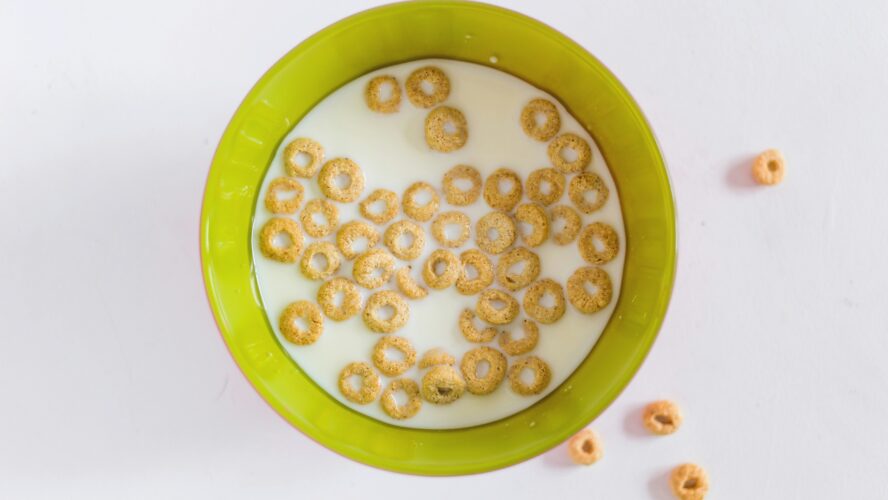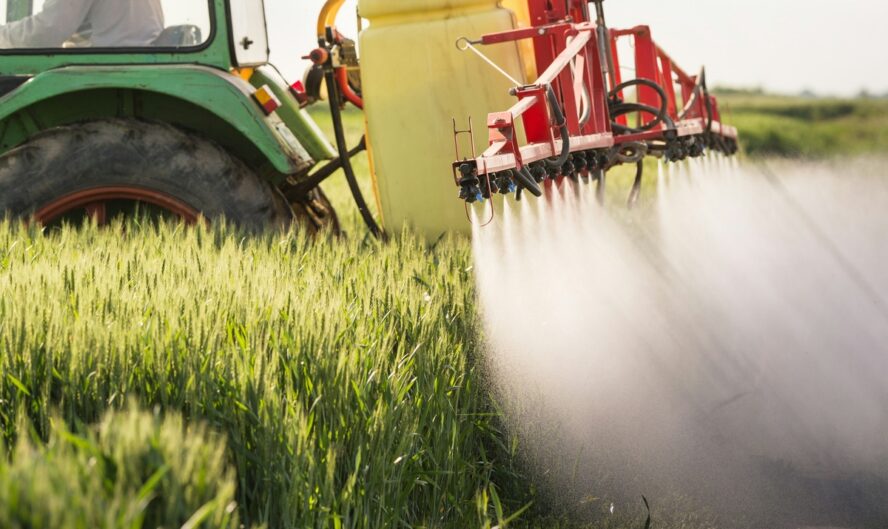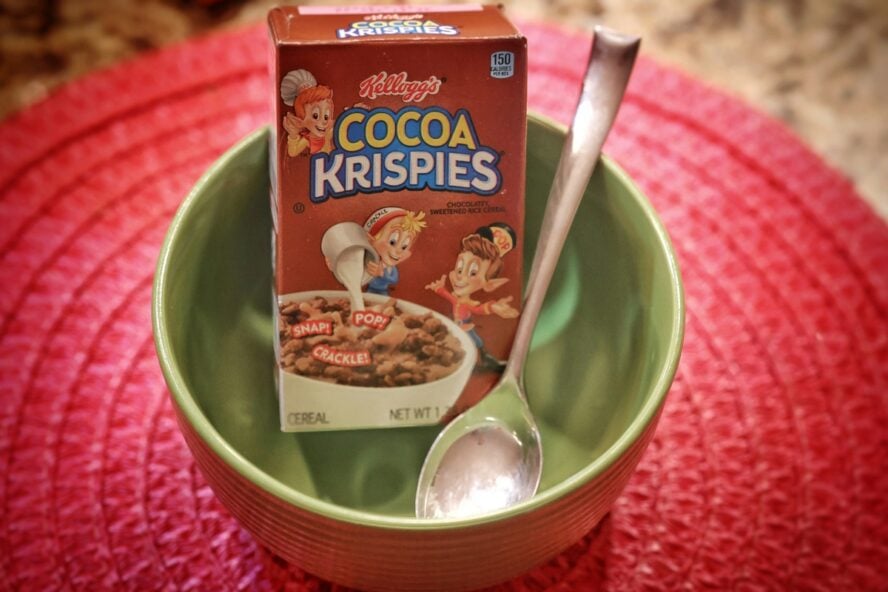
A new investigation by Moms Across America has revealed that many popular breakfast cereals contain chlormequat, a pesticide banned for use on food crops in the U.S1. The investigation found traces of chlormequat in 11 of 14 cereal samples tested, including Quaker Instant Oatmeal Cinnamon & Spice, Fruit Loops, Rice Krispies, and Cocoa Krispies. Even organic options like Cascadian Farm Honey Nut Cereal and Kashi Cocoa Clusters were contaminated. The highest levels of the pesticide were found in General Mills’ Honey Nut Cheerios, with 134.16 ppb.
Unfortunately, this is far from the first time we’ve dealt with pesticides in places they shouldn’t be. These findings confirm previous research funded by EWG that was published in 2024 in the Journal of Exposure Science & Environmental Epidemiology. The research found traces of the chemical in both conventional and organic oat- and wheat-based foods including Cheerios, Quakers Food oatmeal and granola bars, and Walmart and Target store-brand granola and cereals, among others2.
Want more wellness news? Sign up for the newsletter for more well-researched, non-toxic living guidance.
What Is Chlormequat Used For?
Chlormequat is typically used to stunt the growth of ornamental plants and grains like wheat, oats, and barley, making them easier to harvest. But it’s not without its side effects.
In the early ‘80s, Danish pig farmers began observing a decline in the reproductive ability of pigs raised on grains treated with chlormequat. The observation led to further research on pigs and mice, which confirmed this concerning link3. Lab experiments on mice and rats have since confirmed that the pesticide decreases male fertility, delays onset of puberty, and decreases testosterone levels, especially when exposure happens during gestation and early development4.

Chlormequat was first registered in the U.S. as a plant growth regulator in 1962, and it was initially only allowed for use on ornamental plants. But in 2018, the EPA began to permit the import of foods, primarily grains, treated with the chemical from the EU, UK, and Canada. In those areas, chlormequat is legal to use on food crops destined for human consumption. In fact, in the UK and EU specifically, chlormequat is often the most detected pesticide residue in grains and cereals2. In 2020, the EPA increased the permissible level of chlormequat residues on imported oats.
We’re About to See More Chlormequat, Not Less
The repercussions of these policy changes are already detectable: According to the 2024 study, which tested urine samples from 96 Americans across the country from 2017 to 2023, 80 percent of Americans have detectable levels of chlormequat in their systems — and levels have significantly increased over time2.
This problem of chlormequat in food is likely to worsen in coming years. Following a 2019 application submitted by chlormequat manufacturer Taminco, the EPA under the Biden administration proposed allowing the first-ever use on food crops grown in the U.S. In 2023, the EPA released a proposed decision for public comment. If finalized, the rule would allow the application of chlormequat on barley, oat, triticale and wheat grown in the U.S. If there was ever a better time to seek alternatives to Cheerios and other breakfast cereals with pesticides, it’s now.
Other Pesticides in Our Breakfast

In addition to chlormequat, Moms Across America’s new tests found that two popular cereals — Quaker Instant Oatmeal and Kellogg’s Cocoa Krispies — also contained diquat and paraquat residues. Diquat is banned in the UK, EU, and China, but is widely used in vineyards and orchards in the U.S. Paraquat has been banned in 70 countries including the UK, EU, Morocco, Cambodia, Chile, and China, but remains legal in the U.S.
2025 research showed that diquat can disrupt the balance of gut microbiota, leading to inflammation, metabolic issues, and other health concerns5. Paraquat, one of the oldest pesticides in use, has been linked in multiple studies to an increased risk of developing Parkinson’s Disease6. Needless to say, these banned pesticides have no place in our breakfast.
Read More on Organic Authority
Sources:
- https://www.momsacrossamerica.com/banned_pesticide_replacing_glyphosate
- https://www.nature.com/articles/s41370-024-00643-4#Sec8
- https://pubmed.ncbi.nlm.nih.gov/16466532/
- https://pubmed.ncbi.nlm.nih.gov/32622971/
- https://www.frontiersin.org/journals/pharmacology/articles/10.3389/fphar.2025.1562182/full
- https://pubmed.ncbi.nlm.nih.gov/38309714/

